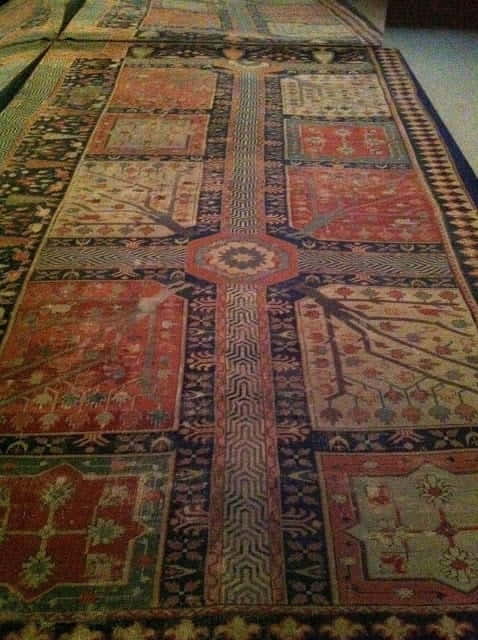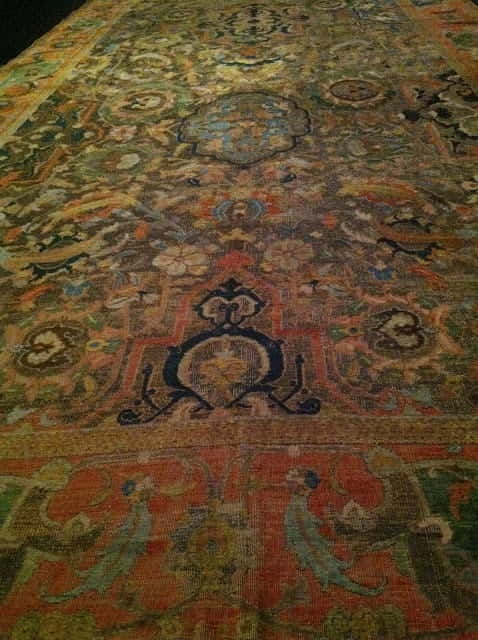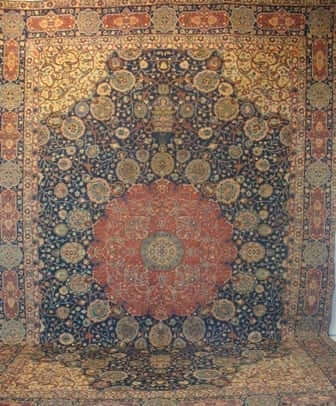- MON-SAT: 10AM - 5PM | SUN: 11AM - 4PM
- 1349-1353 High St, Malvern, VIC 3144
- (03) 9041 9995 | AH: 0412378798
- [email protected]

A visit to Tehran museum (Iranian Persian Carpet Museum) in the middle of Tehran city is an experience full of culture and history. Home to some of the world’s rarest and most beautiful antique carpets, this museum was built in 1974 and displays carpets from the 17th to early 20th centuries and since 1970 carpets have been collected by the museum.
As soon as you step through the entrance doors, you will be welcomed by a tranquil atmosphere with soothing water fountains in a central pond. Inside, a stunning array of carpets hang from low-lit spotlights in perfect harmony with their surroundings, while other exquisite specimens lie flat on dark floors and are illuminated by carefully placed spotlights that showcase their intricate motifs.
But it doesn’t end there; seven extra-large carpets hang in the museum’s grand foyer, each piece representing a unique type and style — from traditional Qum rugs to more modern tribal designs. With its peaceful atmosphere and captivating displays, no visit to Tehran museum would be complete without taking a moment to appreciate the Iranian Persian Carpet Museum’s unmatched collection.

There are also a few 19th Century silk rugs from Kashan and Tabriz with different forms of Mehrab and tree of life designs. There were two 17th Century rugs on display during this visit. A Tabriz Garden design carpet in which the panels of trees and stylized flowers are divided by irrigating water channels. Intricate ripples in the water are cleverly designed by repeated arches in black and white.
It seems to me that the artist may have had a roof top view of a large rectangular garden while drawing the pattern and the beauty of it is that the pattern was drawn on plain paper and it is rather naive and full of mistakes. Repeated stylised shrubs in the border lines have also been seen in some other nomadic pieces.
In the design you can see: a 6 branch shrub with a head of A bird on each branch, a nomadic version of a tree of life motif. Simple art but yet artistic in presentation. The design shows wide water channels running in to a central pond with a large flower in the middle. I presume this large flower represents the fountain.
The rug shows a walkway along one side which is lined with pine trees and flower bushes. It seems that the artist was capturing a palace’s garden. Beautiful madder red and various natural dye blues and greens complete the beauty of this carpet.

The second 17th Century carpet at this Exhibition is a Royal Isfahan Gallery rug with all over stylized Shah-abassi guls (flowers) . THE naturally oxidized charcoal GREY field and beautiful madder orange border GIVE this over 350 year old piece a glow. At the same time it is a very peaceful piece to admire.
This rug is one of 7 Isfehan pieces that were part of the Royal Collection. They were woven in the Royal workshops in Isfehan between 1630-1670. This piece and six other Isfehan pieces (which are in the storage of the museum) were taken from Shahabbass palaces in Isfehan to be maintained and exhibited in this museum.

Also on display I saw some of the best examples of late 19th and early 20th Century very fine wool pile Kerman master weaves with busy and yet beautiful floral motifs.
There are also many beautiful 19th Century prayer rugs from north western Persia and tribal pieces from Kurdistan and the Sarouk region.
